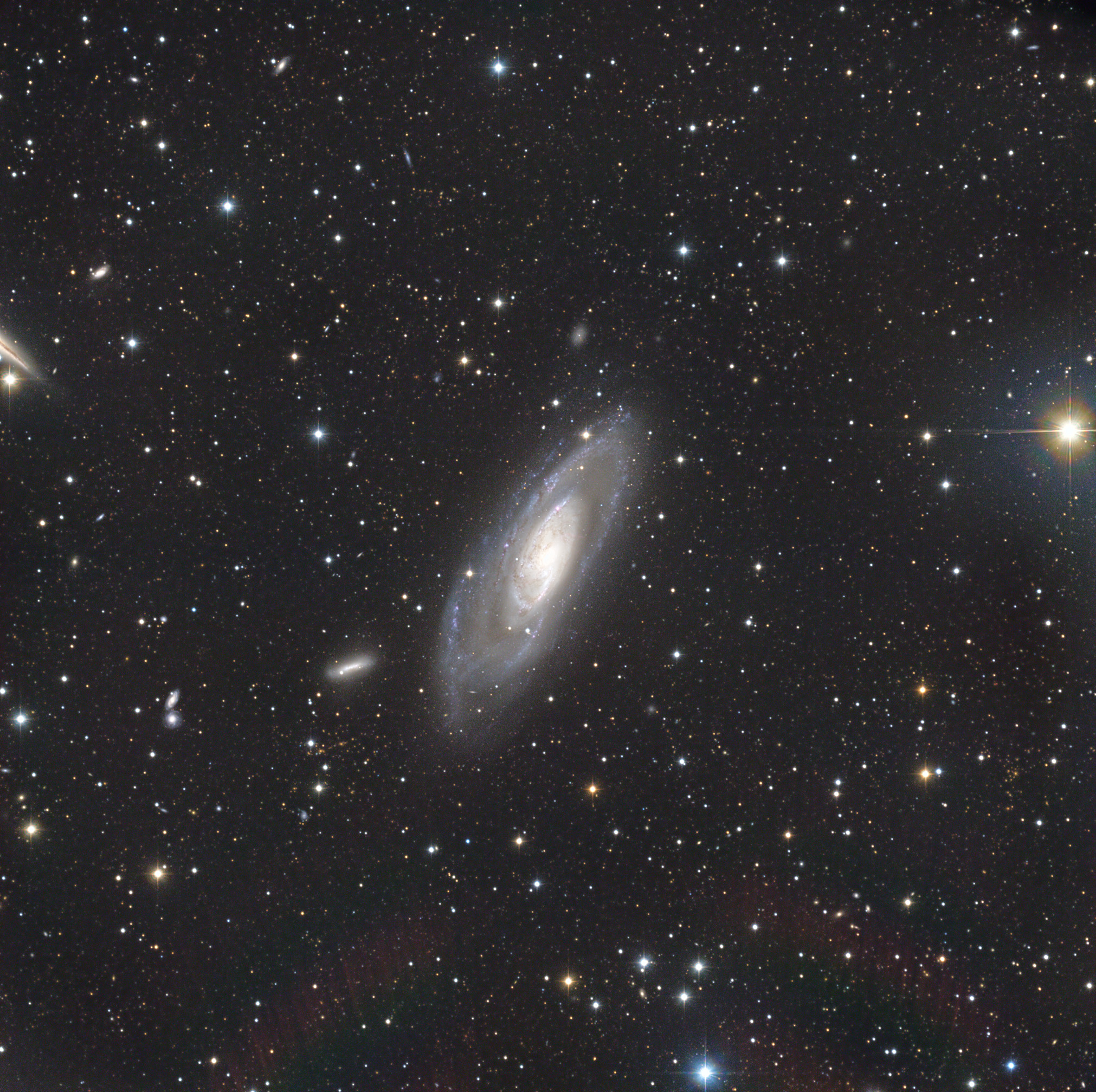This image was made using a beta version of the X2 Kepler driver for TheSkyX (on Windows, unfortunately). The driver is behaving rather well, but we can see some red arcs in the lower part of the image, which may be stray light from a bright star which is to the north of the frame (and so below, given the image orientation).
Despite being a large, bright and prominent galaxy, M106 was not included in earlier versions of Messier's catalogue, even though it had been discovered several years before its compilation, by Pierre Méchain, in 1781. It is relatively close, at a distance of 23 million lightyears, but is not part of our "local group" of galaxies. Instead it is a member of the group known as Canes II, several of whose members are also visible in the image (with one, NGC 4217, peeping in at the upper-left of the frame).
M106 is larger than our own Milky Way galaxy, and about equivalent to the Andromeda Galaxy, M31, though it is of more irregular shape. It looks somewhat twisted and appears to have 2 spiral arms - however, high resolution images show 4 arms, where the extra two may be dominated by gas rather than stars.
As a close galaxy M106 has been subject to many professional investigations, and these have shown active jets, as seen in M82, and this leads to speculation of an active nucleus with a supermassive black hole.
The half-visible NGC 4217 is about twice as distant as M106, and is of roughly similar size. Given that it is at least as far from M106 as the latter is from us, one could question if it is even in the same local group as M106.
Again, I've had to downsample to 50% to fit within the 2Mb limit, even with quite heavy JPEG compression.


